Introduction
The hip flexor stretch is often recommended by rehab coaches and fitness trainers to address tightness, weakness, and pain in the hip flexors. They argue that sitting too much tightens these muscles, and lack of sprinting and movement weakens them. The suggested remedy is to kneel on one leg, tense the body, and stretch the hip flexors to hopefully allow for more range of motion in the hips so you can move more freely.
However, this approach focuses solely on lengthening the hip flexor muscles and neglects the whole system during walking and running. Kneeling hip flexor stretches don't mimic the natural propulsive movements of running that our muscles evolved for over millions of years. Instead, they keep you in a static position, lengthening the hip flexors.
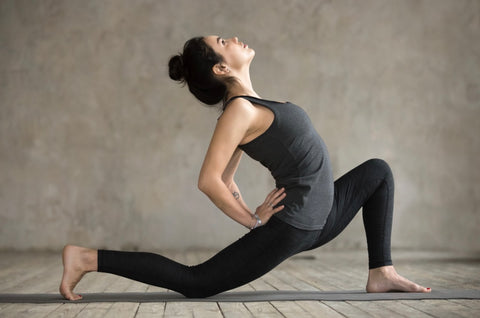
While some may experience short-term benefits, this method may lead to long-term problems. Overly lengthening the quads and hip flexors can result in a loss of the contractile potential needed to support the hips and knees during dynamic activities like sprinting or lateral jumping. It's worth noting that those who see short-term benefits from hip flexor stretches and routines are often younger and these stretches fail to cater to the older demographic.
Additionally, hip flexor stretches overlook the common issue of knee misalignment in most people. Therefore, it's crucial to consider a more comprehensive approach to address not just hip flexors but also strengthen weak glutes, improve core activation, and address knee alignment for better long-term outcomes. More on that later.
Evolutionary Adaptation: The Significance of Hip Flexors in Terrestrial Locomotion
The hip flexors are a group of muscles located in the hip region that play a crucial role in flexing the hip joint and lifting the leg. The evolution of hip flexors can be understood in the context of human and vertebrate evolution.
During the evolutionary process, as vertebrates transitioned from aquatic to terrestrial environments, the development of hip flexor muscles became essential for various functional movements. In water, buoyancy partially supports the body, and movements are often different from those required on land. As animals adapted to terrestrial life, new challenges, such as the need to lift and swing the limbs for walking and running, arose.(1)
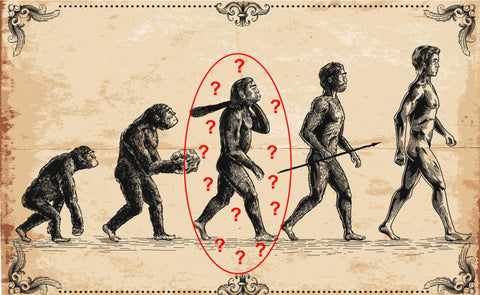
The evolution of the hip flexors in humans and other terrestrial vertebrates is closely linked to the demands of bipedal locomotion. Bipedalism, or walking on two legs, is a distinctive feature of humans and some other primates. The hip flexor muscles, including the iliopsoas, rectus femoris, and sartorius, are crucial for lifting the leg, moving it forward, and maintaining balance during walking and running.
The development of efficient hip flexors allowed for more energy-efficient and endurance-based forms of locomotion. This adaptation provided advantages for early humans, such as the ability to cover long distances on foot while freeing the hands for tool use and carrying objects.
In summary, the evolution of hip flexors is closely tied to the transition from aquatic to terrestrial environments and the development of bipedal locomotion, enabling humans and other terrestrial vertebrates to walk and run efficiently.
With this in mind it is crucial to understand that if a hip flexor exercise or an isolated stretch of the hip flexor muscle does not make our walking and running better it is often causing a muscle to overly lengthen and eventually lose strength and size. There is such a thing as an optimal range of motion.
Hip flexor stretches overly lengthen muscles promoting an excessive range of motion

In order to walk efficiently, we don't just extend our legs as far as possible. Similarly, when running, we don't swing our arms excessively. For both activities, an optimal range of motion is key for a quick and effective gait. However, hip flexor stretches often encourage the opposite approach. Pushing your body to its maximum range, especially while seated and neglecting proper glute activation, can result in increased instability in the hips and knees. This happens because these muscles need to contract to keep the joints stable.
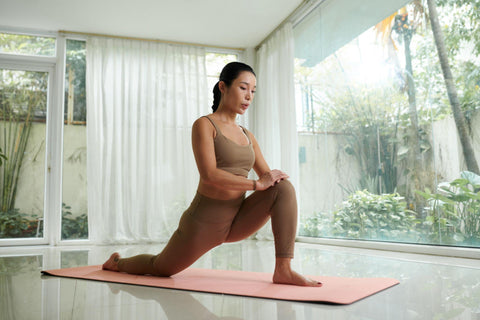
Biomechanical considerations when activating the hip flexors
Many individuals are unaware that their knee joints are frequently misaligned, their glutes are often underdeveloped, and they struggle with improper core muscle utilization, leading to increased hip instability. While hip flexor pain or tightness may be a common symptom of these dysfunctions, simply stretching the hip flexors does not effectively address the issue of weak muscles not being able to effectively support the joints of the hips and knees.
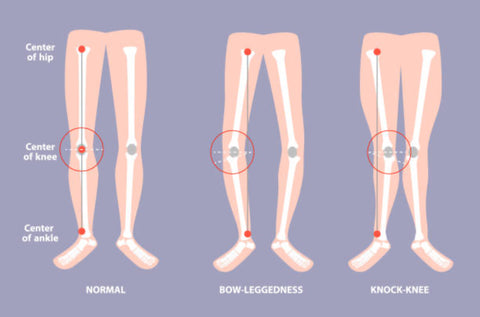
These dysfunctions go beyond surface-level tightness; they are deeply rooted in bone structure and movement dysfunctions. Unfortunately, people are often not educated on proper ways to remedy these issues perpetuating the cycle of dysfunction.
Why Stretching Alone Won't Relieve Hip Flexor Pain: The Importance of Active Training
When we run and walk, our bodies execute dynamic movements that necessitate muscle activation for robust joint support. Conventional stretching techniques, such as ATG split squats or kneeling hip flexor stretches, inadequately replicate the intricate muscle activation patterns vital for activities like running or walking (gait cycle). While a functional hip flexor stretch does occur during running, it is essential to recognize that its effectiveness lies in forward propulsion and proper glute activation. Assuming that these stretches faithfully emulate the demands of sprinting is a narrow perspective. Realizing the multifaceted nature of muscle engagement during vigorous activities and then applying this to your workouts is crucial for a comprehensive training approach.

While some may resort to combining stretching with muscle-building exercises for a quick fix, these exercises often fail to address the whole system. Strengthening muscles after you've overly lengthened them doing a couch stretch or kneeling hip flexor stretch does not remedy this problem.

In summary, hip flexor stretches, commonly recommended for addressing tightness and pain, often oversimplify musculoskeletal health. Kneeling hip flexor stretches, while providing short-term relief, neglect long-term considerations such as weak glutes and poor core activation.
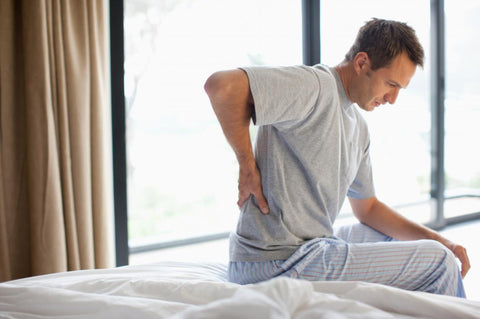
Understanding the evolutionary adaptation of hip flexors highlights their role in terrestrial locomotion. To promote optimal gait cycles and joint health, a focus on functional ranges of motion is essential. Biomechanically, hip flexor activation requires attention to factors like knee alignment and overall muscle utilization.
To address hip flexor concerns effectively, a systems approach involving targeted exercises, improved muscle activation, and considerations for overall body alignment is crucial. Rather than seeking temporary relief through a stretch, prioritizing long-term joint support, muscle strength, and functional ranges of motion need to be prioritized to achieve a more well-balanced, pain-free body.
Move Better with Functional Patterns Training
At Functional Patterns, we steer clear of the common practice of isolating muscles through stretches that may lead to hypermobility. Instead, we employ modalities like myofascial release to address adhesions or knots in tight muscles first. In the case of releasing a tight hip flexor this is a much better approach than stretching the area. Following this, our focus shifts to targeted exercises aimed at achieving more functional ranges of motion for the entire body through movements that align with walking and running.
Our emphasis lies in movements aligned with the FP first 4 of standing, walking, running and throwing, facilitating effective stretches and contractions. While the industry has not yet embraced this comprehensive mindset, at Functional Patterns, we've been working on this concept for over a decade, providing a unique and advanced understanding of addressing the root causes of musculoskeletal issues.
By utilizing Functional Patterns training focusing on standing, walking, running, and throwing, you can achieve better mobility, strength, and more functional ranges of motion for the hip flexors and whole body. We encourage you to explore our Functional Patterns 10-week online course, with the initial four weeks dedicated to myofascial release which will get your hips feeling more mobile, stable and a thorough explanation of standing and walking gait in the subsequent six weeks. This educational course offers a deeper understanding of how the hips should operate so you can feel better and move pain free. This course is also backed by a strong track record of results and testimonials from pleased customers. That's all for now.
Train intentionally and not habitually
References
- Long, J.A., & Gordon, M.S. (2004). The Greatest Step in Vertebrate History: A Paleobiological Review of the Fish‐Tetrapod Transition*. Physiological and Biochemical Zoology, 77, 700 - 719.







